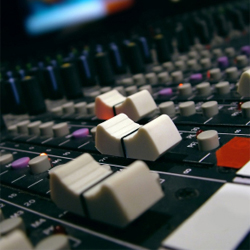
As budgets became available for quality live recording the first studio trucks were created. A recording studio control room was crammed into a box truck and trundled off to the gig. Either using splits off the sound reinforcement mics or double mic’ing everything. a quality multi-track recording an actual concert could be made. A few audience mics were added, and voila, the record company had their new release.
The best part? No new songs had to be written. The same songs could be sold to eager fans twice! Soon, no self-respecting band was without a live album. Of course, the other advantage was that if the house mix or sound system was substandard, or the acoustics were bad, a multi-track master tape provided some ability to “fix it in the mix.”
And on more than a few instances the band would nip into the studio to fix “green notes” in the vocals or a botched guitar lead.
Live recording had started to generate its own revenue stream, which supplemented the box office receipts from the show. Eventually someone got the bright idea of bringing a movie camera into the proceedings. Between the audio recording truck, the camera operators, directors and miscellaneous technical personnel, it could turn into a huge undertaking. For some events, it was worth the money.
The Woodstock movie made far more cash than the festival itself. If you couldn’t go to the concert, the concert would come to your local movie theater. But only the biggest bands or the most high profile events could justify the expense of the production and pack the fans into theaters.
INNOCENTLY ENOUGH
As technology continued it’s relentless march, many acts wanted to record every performance. It started innocently enough with the ubiquitous “board tape.” At first this was just a stereo cassette coming right off the same stereo pair feeding the mains. These tapes were generally used by the band and their management to review the night’s performance.
Of course, sometimes this led to some mix criticism as well. It was hard to explain to a guitar player that the reason he couldn’t hear himself on the board tape was because his stage amplifiers were on “11” and his mic was off.
So eventually we started doing sub mixes for the board tapes. I’ve done tours where I had a combination of pre-fader and post-fader stereo aux sends, and used delays to time align an X-Y stereo pair of room mics into a DAT machine – all just to make the troops happy with their review tapes.
And inevitably some bright soul would say, “We could release this as a live album!” or maybe give their copy to their girlfriend, which later appeared as a bootleg causing great consternation and finger-pointing within the ranks.
But that’s another story.
I saw one act that even carried a 24-track recorder in a huge flight case and a maintenance technician on tour so they could record every night. They even organized their set list to give the tech time to change tapes. A sound company I worked for owned a Midas Pro 5 board reputedly built for Harry Belafonte (and of course christened the “Day-O” board), and it had an extra 24 output buses to feed his recorder. It also weighed a ton.
